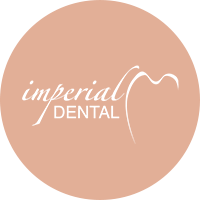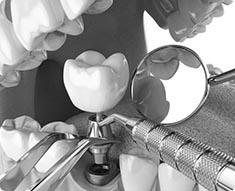Inlay, Onlay
An inlay is a special filling prepared by a dental technician and bonded by a dentist into the into the tooth cavity. It is made on the basis of the impression of the tooth cavity in a dental lab consisting of a solid substance fitted into the tooth.
Inlay | Material
Inlays can be made of different materials. The most commonly used substances are gold, precious metal (gold inlay), ceramics (porcelain, aesthetic inlays) or composite (white inlay). The advantage of gold inlay is the easy elimination of invisible inaccuracies due to its material properties. A porcelain or composite inlay is more transparent looks more natural and its colour is similar to natural teeth.
Inlay | Accuracy
Due to laboratory conditions inlays have a much more accurate fit than tooth fillings. It is prepared in an individual shape to provide perfect bite and functionality.
Inlay | Onlay | Overlay
Inlays, onlays, overlays can restore cusps and cover the teeth. An inlay is more expensive than a directly made tooth fillings but it can potentially last for decades. It is more durable, it doesn't break or discolour.
Inlay | When Are They Applied?
Tooth cavities can be restored in several ways, for example, light-cured aesthetic fillings or inlays. An inlay is a cast type of restoration retained by mechanical factors in the preparation of the tooth and accurate fitted into the tooth cavity. Inlays are bonded to the tooth using adhesive dental cement. This procedure makes inlays more durable than traditional fillings. The material of the inlay can be chosen by the patient during a consultation with the dentist.
Inlay | Summary
An inlay is a solid type of filling prepared in a dental lab to replace the missing tooth tissue and to restore anatomical function, shape and chewing ability of the tooth. Inlays are bonded into a prepared tooth cavity by the dentist.
Tooth-coloured Inlay | Large Cavities
Tooth-coloured inlays are required in case of a large area of tooth decay especially it expand to adjacent tooth surfaces as well. It is required in case of replacing old, large dental fillings too. It looks more natural than directly made dental fillings and gives back the normal biting surface of the tooth with its well-prepared grooves. As it's made in a dental laboratory its physical properties are more appropriate than traditional fillings (abrasion-resistant, does not break, does not discolour).
Tooth-coloured Inlays | Durability And Aesthetics
A tooth-coloured inlay is very durable and aesthetic type of restoration that has a lot of positive features:
- arbitrarily chosen colour
- ensures perfect contact point between the adjacent teeth
- permanently restore the missing cusps
- it is not necessary to grind the teeth
- can be also used for replacements (inlay-anchorage bridges)
- potentially last for decades
- extreme fitting accuracy, high-quality
- outstanding strength and stability
- non-allergenic
In every respect, a dental inlay is a much better solution than a standard tooth filling. In spite of its higher cost, it is a worthwhile investment since it's a long-term restoration for tooth cavities.


 Flughafentransfer
Flughafentransfer Individueller, detaillierter Behandlungsplan
Individueller, detaillierter Behandlungsplan VollstÃĪndige Implantatberatung und zahnÃĪrztliche Untersuchung
VollstÃĪndige Implantatberatung und zahnÃĪrztliche Untersuchung PanoramarÃķntgen des gesamten Mundes
PanoramarÃķntgen des gesamten Mundes Computergesteuerte Bissanalyse
Computergesteuerte Bissanalyse
